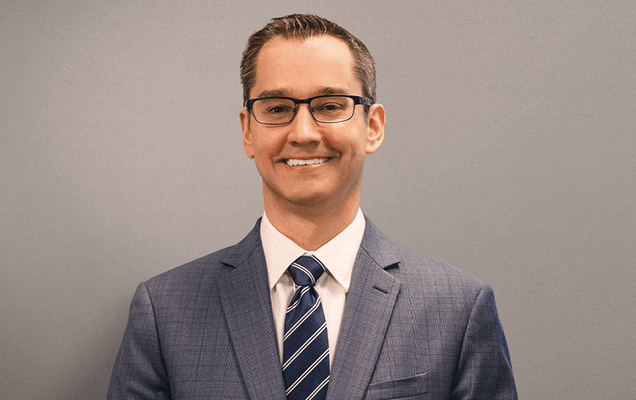When you’ve been advised to undergo surgery, the surgery itself is the main focus. It can be the difference between a life of unsettling symptoms or afford you the freedom to return to your active lifestyle.
Often overlooked in the details of preparing for surgery, recovery is perhaps the most important element for a successful outcome. Spinal decompression surgery recovery time can vary depending on the complexity of your surgery and what procedures are being used to treat your spinal compression.
Procedures used for spinal decompression
There are three procedures that are widely used for spinal decompression surgery. They include:
- Laminectomy
- Partial discectomy
- Foraminotomy
On occasion, spinal fusion may be used as a means of stabilizing the areas of the spine that were treated, adding a fourth procedure to the mix.
As laminectomy is the most commonly performed procedure for this treatment, the spinal decompression surgery recovery time will be outlined for a laminectomy.
Laminectomy recovery overview
A laminectomy is a surgery that requires that your surgeon remove a portion of one or more vertebra. This part of the bone is known as the lamina. Once this segment of bone is removed, it provides space within the spinal canal for your spinal cord to move freely once again. It is most commonly used to treat spinal stenosis (narrowing of the spinal canal).
In some instances, a spinal fusion will be performed in conjunction with a laminectomy. This procedure uses bone grafts or allografts (and sometimes a synthetic “scaffolding” material) to connect two or more vertebrae together. This is done to create stability and inhibit movement between the weakened vertebra. If extra support is needed, orthopedic instrumentation such as rods, screws or plates may be used to help create extra stability.
For this type of spinal decompression surgery, recovery time is outlined below.
Days 1 – 3
Your recovery will begin as soon as your surgeon has closed your surgical incision. You will be taken to the recovery ward where you will receive intravenous pain medications and have your vitals monitored until you wake up and are stable.
From recovery, you will be moved to a room for the rest of your hospital stay, which is typically between 1 and 3 days. During this time you’ll be encouraged to get up and walk around and your neurological function will be assessed. You will also be transitioned from intravenous pain medications to an oral form.
Days 4 – 7
Consider having someone come in and help you; especially during these first few days of your at-home recovery. You will be more tired than you typically are as your body is recovering from surgery. Take it easy and get as much rest as you feel you need.
You’ll still be experiencing some pain from the surgery. Your doctor will have sent you home with prescriptions for pain medication. Make sure you take these as directed. It’s more difficult to get the pain under control than it is to prevent it in the first place.
During your discharge, your doctor or healthcare provider should have provided you with a set of restrictions on lifting and other activities. In most cases, five pounds is the limit for lifting so you don’t injure your surgical site.
Showers are permissible during this first period of healing. Don’t let the water hit directly on your incision site. Also, avoid soaking in the bathtub or allowing your incision to become saturated, as this can disrupt healing and potentially lead to infection. Always gently pat your incision site dry — rubbing can tear the skin or loosen sutures both at the surface and below the skin level.
If you’ve had a spinal fusion and you smoke tobacco in any form, continue to abstain for at least the length of your entire recovery. Smoking can delay or even prevent proper healing in the grafts of your fusion surgery.
It's time to get back
to doing what you love.
Days 8 – 14
By the beginning of your second week following surgery, you should be feeling better. Some of your energy will have returned and you’ll be experiencing less pain. You may feel as though you can do a lot more but it’s important to remember that your body is still healing.
Around this time you’ll also need to return to your doctor’s office for a follow-up. At this time he or she will ask you how you’re doing, examine your surgical site and may also take x-rays or perform other imaging studies to ensure that your surgery is healing as expected. They may also ask you how your pain levels are and advise you to transition to over-the-counter pain medications.
Depending on the type of work you do, you may be released to return back to a light-duty job at the end of the second week. In most instances, three weeks is more typical.
If you’re itching to get back to some of your normal activities, be sure to ask your doctor if it’s okay to resume them. Often times, you may be able to start increasing your activity level by this point in your recovery.
Days 15 – 30
You’re more than two weeks into your post-surgical recovery! At this point, you’ll have had a follow-up visit with your doctor and will know how your healing is progressing.
The pain and other symptoms from your spinal compression should be greatly improved; in the case of nerve damage from compression, your doctor can help you determine how much of an improvement you can expect to see long-term.
Physical therapy may be started around this time. Your physical therapist will help you learn exercises that will strengthen the muscles in your back and achieve better flexibility following your surgery.
If you’ve not returned to your low-impact job yet, you may be able to do so by around day 21. Be sure to take good care of your back if you’ll be sitting for long periods of time. Ergonomic chairs and proper posture will go a long way towards allowing you to remain comfortable and avoid placing stress on your surgical site.
Continue to increase your activity as directed by your doctor. Your lifting restrictions may allow you to lift slightly more weight than before. Still continue to heed these instructions, as it doesn’t take much to damage even the healthiest backs when it comes to lifting.
After 30 days
Continue to attend your follow-up visits with your surgeon. If you work in a high-impact job, ask your surgeon when you can expect to be able to return to work. Most people are released to resume working in strenuous occupations at around 6 weeks.
When you work with an experienced, compassionate surgeon for spinal decompression surgery, recovery time will be focused on getting back to your everyday life. That’s why it’s so important to seek out the best, most qualified neurosurgeons in the Tristate area to help you on your journey back to being able to do the things you love.

About Dr. William S. Cobb
Dr. William Cobb is an accomplished neurosurgeon in North Jersey and a proud member of Neurosurgeons of New Jersey, practicing out of their Ridgewood office conveniently located on East Ridgewood Avenue. During his Neurological Surgery residency, he became passionate about the development and treatment of brain tumors affecting the brain and spine. Dr. Cobb uses state-of-the-art technology for surgical intervention in the treatment of tumors of the brain and spine including Gamma Knife radiosurgery. He has vast experience in using modern minimally invasive surgery for the treatment of degenerative spine and intervertebral disc disease. Dr. Cobb serves as the Director of Neurosurgical Oncology at Valley Hospital. He's accepting new patients.
Recent Posts:






